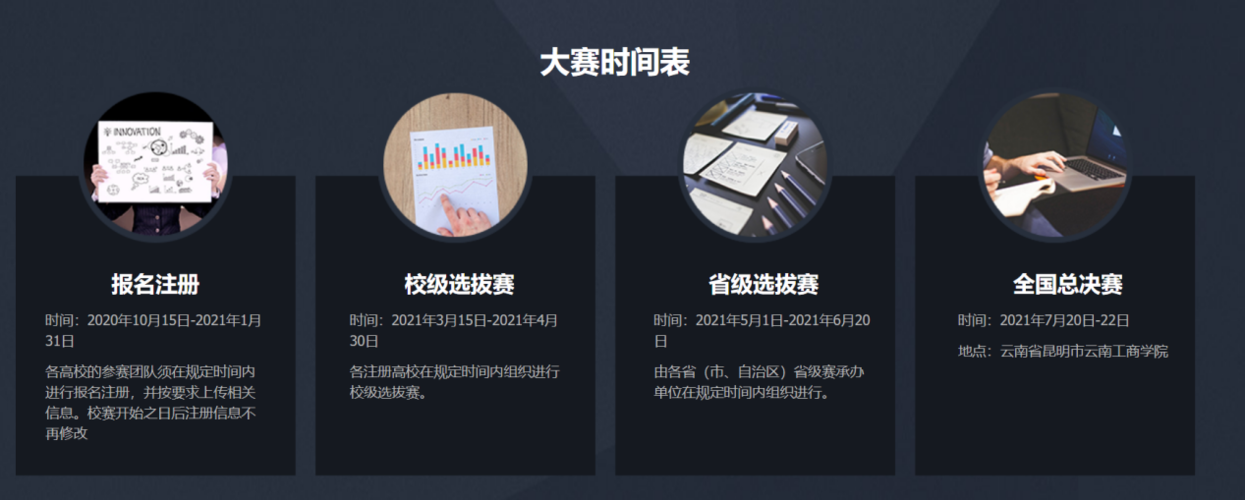人教版体育高中体操视频
While high school gymnastics in the People's Education Edition curriculum offers numerous benefits, it also presents some challenges:
3.
Teacher Training
: Effective implementation of the gymnastics curriculum requires welltrained teachers with expertise in gymnastics instruction. Ongoing professional development opportunities can enhance teachers' knowledge and skills in teaching gymnastics effectively.The high school gymnastics curriculum in the People's Education Edition typically covers a wide range of gymnastic disciplines, including artistic gymnastics, rhythmic gymnastics, and sometimes elements of trampoline gymnastics. Each discipline focuses on different aspects of physical fitness and skill development.
High school gymnastics, as part of the physical education curriculum in the People's Education Edition, holds significant importance in nurturing students' physical abilities, coordination, and overall fitness. With its structured approach, it aims to develop students' agility, strength, balance, and flexibility, along with instilling discipline and perseverance. Let's delve into the intricacies of the People's Education Edition high school gymnastics curriculum.
3.
Feedback and Correction
: Teachers provide constructive feedback and corrections to students during practice sessions, helping them refine their techniques and overcome challenges.4.
Progressive Training
: The curriculum follows a progressive approach, starting with basic skills and gradually advancing to more complex movements as students develop their abilities.2.
Practice Sessions
: Students engage in structured practice sessions to reinforce their understanding of the skills and to improve their proficiency through repetition.Teaching Methodology
1.
Safety Concerns
: Gymnastics involves inherent risks, particularly when performing advanced skills or routines. It's essential to prioritize safety by ensuring proper equipment, supervision, and adherence to safety guidelines.2.
Rhythmic Gymnastics
: Rhythmic gymnastics combines elements of dance and gymnastics using apparatus like the hoop, ball, clubs, ribbon, and rope. It emphasizes grace, flexibility, and musicality, requiring students to synchronize their movements with accompanying music.Challenges and Recommendations
3.
Trampoline Gymnastics
: Trampoline gymnastics focuses on performing acrobatic movements on a trampoline. It enhances students' aerial awareness, coordination, and spatial orientation while performing flips, twists, and somersaults.
2.
Inclusivity and Accessibility
: Some students may face barriers to participation in gymnastics due to physical limitations or lack of access to facilities and equipment. Efforts should be made to promote inclusivity and provide alternative activities or adaptations for students with diverse needs.The high school gymnastics curriculum in the People's Education Edition aims to achieve several objectives:
In the People's Education Edition curriculum, high school gymnastics is typically taught through a combination of theoretical instruction and practical training. Teachers employ various teaching methodologies to cater to different learning styles and abilities:
Objectives of High School Gymnastics Education
1.
Physical Fitness
: Through regular training and practice, students improve their strength, flexibility, endurance, and overall physical fitness levels.Curriculum Overview
In conclusion, high school gymnastics in the People's Education Edition curriculum plays a vital role in promoting students' physical, mental, and social development. By following a structured curriculum, employing effective teaching methodologies, and addressing challenges proactively, educators can ensure that students derive maximum benefit from their gymnastics education.
1.
Artistic Gymnastics
: This discipline involves performing routines on apparatus such as the floor, balance beam, vault, and uneven bars. Students learn a combination of strength, flexibility, and coordination to execute various movements and transitions seamlessly.3.
Coordination and Balance
: Gymnastics exercises enhance students' coordination, balance, and body control, which are essential not only for gymnastics but also for other physical activities and daily life tasks.[Add references here if needed]
2.
Skill Development
: Students learn fundamental gymnastics skills and techniques specific to each discipline, progressively advancing to more complex movements and routines.Introduction to High School Gymnastics in the People's Education Edition Curriculum
1.
Demonstration and Explanation
: Teachers demonstrate each skill or routine, explaining the key techniques and points of emphasis.4.
Discipline and Perseverance
: Mastering gymnastics skills requires dedication, discipline, and perseverance. Students learn the value of hard work and persistence in achieving their goals.Title: Exploring High School Gymnastics in the People's Education Edition Curriculum
References:
体育资讯
MORE>-
09-20震撼首秀!李可,国足新星的崛起与期待
-
09-20广西卫星残骸掉落事件
-
09-20独家解析2008年NBA季后赛,经典对决,巨星闪耀的永恒瞬间
-
09-202008年的NBA总决赛,王者对决,历史烙印——重温经典瞬间
-
09-20独家回溯2008年NBA总决赛,历史的火花与巨星的对决——迈阿密热火与波士顿凯尔特人的不朽传奇
-
09-20揭秘欧洲足球的狂欢殿堂,欧足联官网深度解析2022年度五大联赛看点
-
09-20浴火之路,赵丽颖浴火之路边境涉险生猛开路
-
09-20罗马宣布德罗西下课,穆里尼奥成球迷发泄对象
-
09-20梅姨案被拐儿童钟彬已找到
-
09-20🔥世界杯前瞻,实力对决还是激情风暴?五大热门球队深度解析与预测🌟
-
09-20希腊新星崛起,科斯塔库弗斯,重塑现代中锋的模板!
-
09-20揭秘!2022年中国男篮全面赛程大曝光,三大挑战与机遇并存
-
09-20狗狗提前8分钟预感地震,狂吠提醒主人的温馨时刻
-
09-20激战上海滩!上海申花VS广州恒大,绿茵对决,谁主沉浮?
-
09-20地震中的勇敢5岁男孩,救小猫的英勇之旅
- 搜索
- 最近发表
-
- 比赛还未开打,北京国安先遭遇个致命暴击,客场取胜梅州客家悬了
- 传奇再续!林书豪,赛季数据华丽转身,他的复苏如何定义NBA新篇章?
- 台风天遇上钱塘江大潮汛
- 震撼首秀!李可,国足新星的崛起与期待
- 广西卫星残骸掉落事件
- 揭秘NBA赛场风云变幻,独家解析QQNBA官网的深度解读与独家视角
- 台风普拉桑二次登陆上海奉贤
- 火箭与小牛的激烈对决,休斯顿烽火与达拉斯牛仔的西部争霸战
- 海绵宝宝电影内地定档9年后重磅归来
- 海港主场平柔佛,马来国脚精彩表现令魏震尴尬不已
- 独家解析2008年NBA季后赛,经典对决,巨星闪耀的永恒瞬间
- 女子58页PPT举报管培生男友嫖娼事件
- 大胜!大日本球星齐破门,创造欧冠年历史,日媒狂欢:载入史册
- 2008年的NBA总决赛,王者对决,历史烙印——重温经典瞬间
- 俄女首富称丈夫闯入公司开枪突袭
- 独家回溯2008年NBA总决赛,历史的火花与巨星的对决——迈阿密热火与波士顿凯尔特人的不朽传奇
- 日本一地傍晚突现巨大蓝色光柱
- 揭秘欧洲足球的狂欢殿堂,欧足联官网深度解析2022年度五大联赛看点
- 浴火之路,赵丽颖浴火之路边境涉险生猛开路
- 揭秘俄罗斯柔术界瑰宝,美丽与力量并存的运动精灵
- 标签列表
-
- 世界杯和欧洲杯哪个含金量高 (9)
- 欧洲杯一共多少球队 (11)
- 2024欧洲杯主办城市 (12)
- 2024欧洲杯比赛时间 (19)
- 欧洲杯在哪竞猜 (13)
- 欧洲杯哪只球队先开球 (11)
- 欧洲杯哪个球队身价最高 (10)
- 欧洲杯有多少只球队参加 (15)
- 参加欧洲杯最多的球员 (11)
- 欧洲杯为什么没有直播 (13)
- 2024欧洲杯百度百科 (14)
- 欧洲杯哪个队最有可能进决赛 (11)
- 2024年欧洲杯预选赛 (16)
- 欧洲杯为什么没有中国 (12)
- 欧洲杯共多少场比赛 (12)
- 欧洲杯都有哪些球队参加 (10)
- 2024欧洲杯参赛队伍有多少个 (10)
- 在哪里可以看欧洲杯预选赛 (13)
- 欧洲杯一场比赛时间多长 (10)
- 欧洲杯参赛球队有几支 (11)
- 欧洲杯一场多少人 (11)
- 直播app (10)
- 直播吧 (18)
- 直播吧官网 (11)
- 直播 (11)




